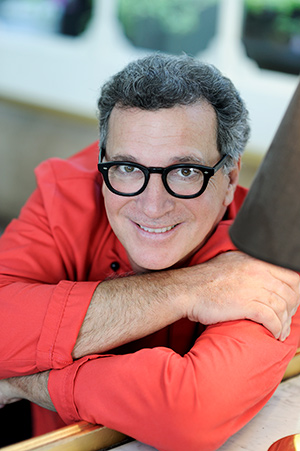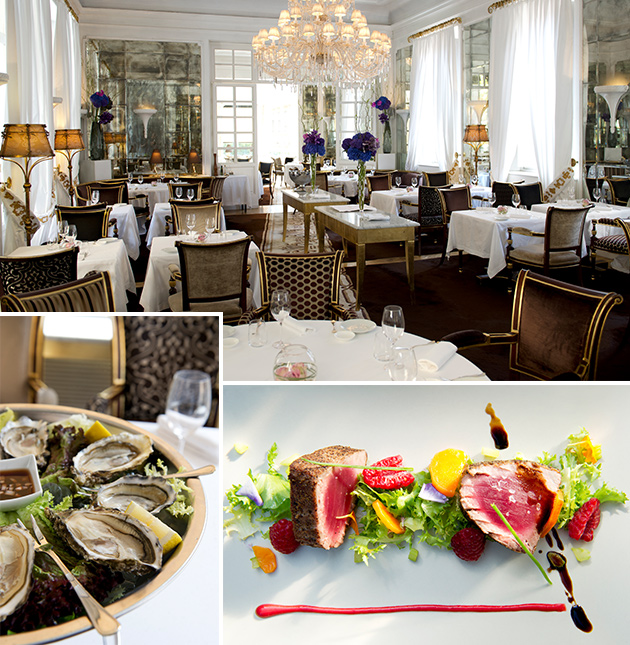
“Aspettatevi il Massimo,” (“expect the best”) reads the motto pointing at Hotel Majestic Roma‘s new chef, Massimo Riccioli. Pun intended.
In October 2013, the iconic Rome hotel located on legendary Via Veneto nominated Riccioli to lead its kitchen, and the chef is ready to serve the right blend of modernity and tradition. This is what he does best, after all, clinging onto ingredients that have been crucial in placing Italian cuisine in the hall of fame of international gastronomy.
After working at Forbes Travel Guide Four-Star Corinthia Hotel London and his very own La Rosetta in Rome, praised by Nicole Kidman nonetheless, Riccioli is settling into his new stint by adding his personal touch to an already beloved restaurant — though when he took chef Filippo La Mantia’s place, the eatery became Massimo Riccioli Ristorante Bistrot. Sipping on his afternoon black tea, the toque explains why he wants to put tradition first and what you have to try from his new menu.
You started working at Hotel Majestic Roma in October, but your background extends beyond Italy’s borders.
Yes, my culinary origins can be traced to La Rosetta seafood restaurant, opened by my parents in 1966 and that I’ve been running since 1981. I have also opened other eateries, one of which was Riccioli Caffè, created as oyster bar in 1998, when oysters were not as popular as they are now in the Italian food scene. I used to get them directly from France and serve them in a very relaxed and fancy-free formula, far from the classic Italian etiquette involving antipasto and first and second courses. My experiment was very successful, probably because it represented an escape from the classic. Riccioli Caffè doesn’t exist anymore; it was created as a cutting-edge place, so when the innovation started fading away and my idea became a stereotype, I felt it had lost its raison d’être.
 Meanwhile, I’ve had the precious experience to work at London’s Corinthia, where I was in charge of opening a Mediterranean-style restaurant. The eatery is still open and bears my name, Massimo, even though I’m not working there anymore. I spent a year traveling to London to launch it, and I’m going to treasure this experience now at Majestic.
Meanwhile, I’ve had the precious experience to work at London’s Corinthia, where I was in charge of opening a Mediterranean-style restaurant. The eatery is still open and bears my name, Massimo, even though I’m not working there anymore. I spent a year traveling to London to launch it, and I’m going to treasure this experience now at Majestic.
The first two months here proved very hard. Organizing, training and recruiting the staff was done while the restaurant was fully operative delivering breakfast, lunch, afternoon bar and dinner daily, plus occasional events. I’m proud of my staff and our achievement so far, and I’ll be even prouder when they’ll become better than me because it will mean I taught them well.
Are you aiming to give a new imprint to the hotel’s restaurant?
I’m trying to erase the difference between a hotel’s restaurant and an ordinary one. I’m aware we are in luxurious premises, and not being on the street level is a deterrent because in Rome, there’s not a trend to pick a hotel’s restaurant for a night out. This is why I’m trying to make it easier, even though my predecessor, Filippo La Mantia, has already done a great job overcoming these obstacles that are more psychological than real.
My menu will give great space to fish prepared in proper Mediterranean-style, with vegetables, extra virgin olive oil, quick sauces, and the food will never be overcooked. I firmly believe in express cooking and raw, all very healthy.
What are the main courses on the menu and which ones do you consider must-tries?
I recommend all the fish-based dishes, as they are my favorite, but we also pay particular attention to Rome’s classics served with a personal touch without straying too far from tradition. Some examples: Our gricia — the white version of amatriciana, made with the same ingredients except tomato — is served with gnocchi instead of pasta because I like how potato combines with guanciale (cured pig cheek) and Pecorino cheese. Also, the traditional cacio cheese and pepper recipe here comes with the addition of baby squids.
As you might have noticed, seafood plays an important role in our kitchen. This is not only because of my father’s legacy, but rather because Rome is actually near the sea, and this is how we honor our geographical position.
There is the possibility to order meat, too, like lamb, also part of local customs, and we serve options such as rib-eye or steak Florentine-style to give our menu a broader spectrum. I think making it too “regional” is a little reductive for a hotel restaurant.
Among my favorite dishes are octopus tabouleh, which encompasses possibly the whole Mediterranean, and raw sea bass with white truffle. I find the combination of contrasting flavors utterly captivating, and I recommend everyone give it a try.
[Another] dish I’m attached to is one of my oldest, which is actually my father’s and bears his name: tonnarelli alla Carmelo (egg pasta with fish), a hazardous but, in my opinion, great match. Also popular are my white sea bass and the grouper filet with eoliana sauce — a typical dish from Sicily, where I’m from, with cherry tomatoes, olives, capers, fennel and scallions to enhance the gentle flavor of the fish.
What are your favorite ingredients or dishes?
I love sandwiches. I would die for sandwiches. One I particularly like is with coppa (cured pork).
I’m naturally very fond of seafood. I could eat a couple hundred sea urchins with only bread and wine — nothing else needed. These are all dishes from my memories. For my father, cooking was a big deal. While every day, the kitchen was my mother’s realm, on Sunday, my father used to take over, and fish was always the main course. In our house, it’s never been about the quantity but the quality of the food, and this is the principle that stayed with me all the way.
Among my favorite ingredients, olive oil holds a special place. I use it for cooking, to enhance other ingredients or alone. My breakfast, for example, is often toasted bread with a drop of olive oil. I owe to my parents also the habit of using garlic and chili pepper, and one of the dishes I enjoy making the most is aglio, olio e peperoncino, pasta with garlic, oil and chili. In my mind, this dish conveys an emotional value, and this is what food should be about: You eat because you feel attracted to a dish, not merely because you’re hungry.
What’s your perspective on Italian cooking?
First and foremost, what’s known as Italian cuisine is actually the result of many culinary traditions. Each region adds its own flavors linked to its culture, from Sicily, a land with a diverse cuisine due to a stormy past where different civilizations chipped in throughout the centuries, to the poorer meals of Rome’s gastronomy and the opulent dishes of Emilia-Romagna, among others.
Italian culinary tradition combines technique, flavors and ingredients, and can’t be considered simply a refined homemade cooking, but a cuisine stemming from the demand of royal families and emperors.
I think the problem with Italian cooking today is that we seem to have dismissed some steps. We often refer to foreign cuisines, forgetting what we have. For example, raw food here has always been used, and even though we enjoy Japanese style, we can’t forget that in the Puglia region, raw fish is very common, obviously without soy sauce or wasabi, but with a tasty seasoning of chili, vinegar and lemon.
What do you expect from your new stint here?
I expect to carry on with my job as usual, organizing a great restaurant with the goal of making it a benchmark in Rome for [those] who want to eat well. We will always try to keep our menu affordable to help deal with the economic downturn, but we’ll never give up on tasty and healthy treats. I will continue to serve what I’ve always offered, quality above all.
Photos Courtesy of The Majestic Hotel

